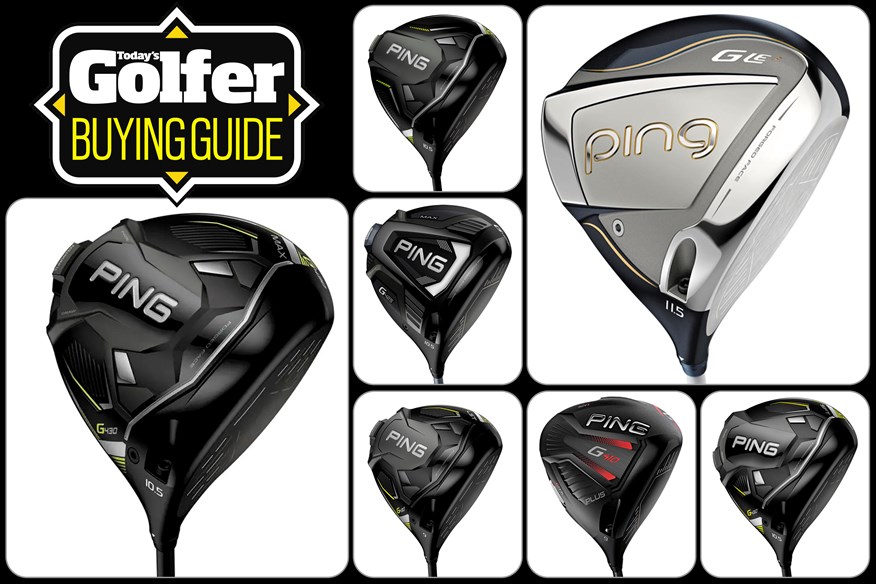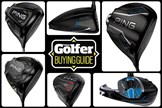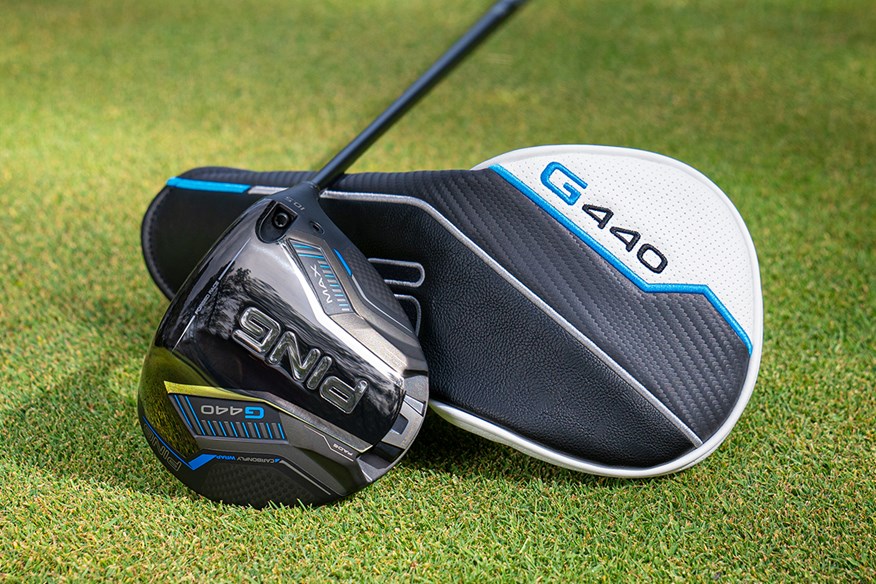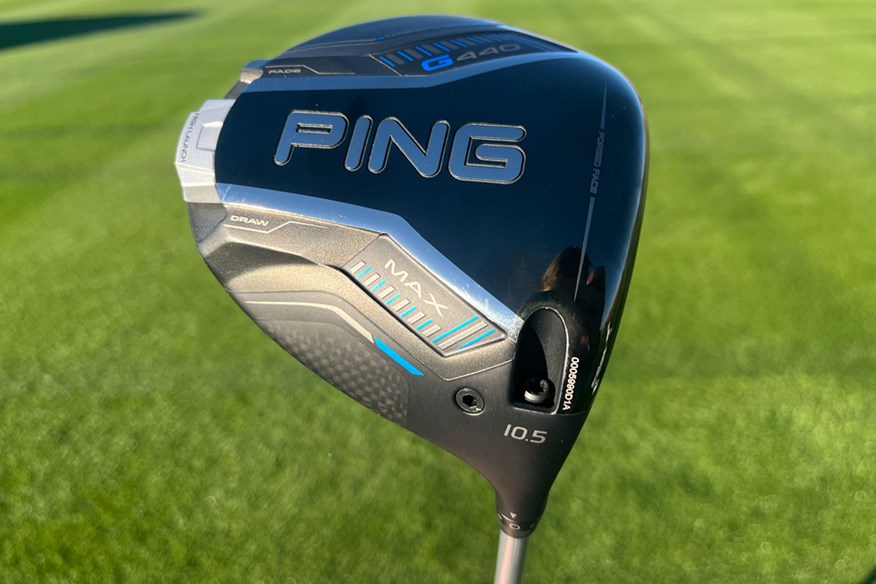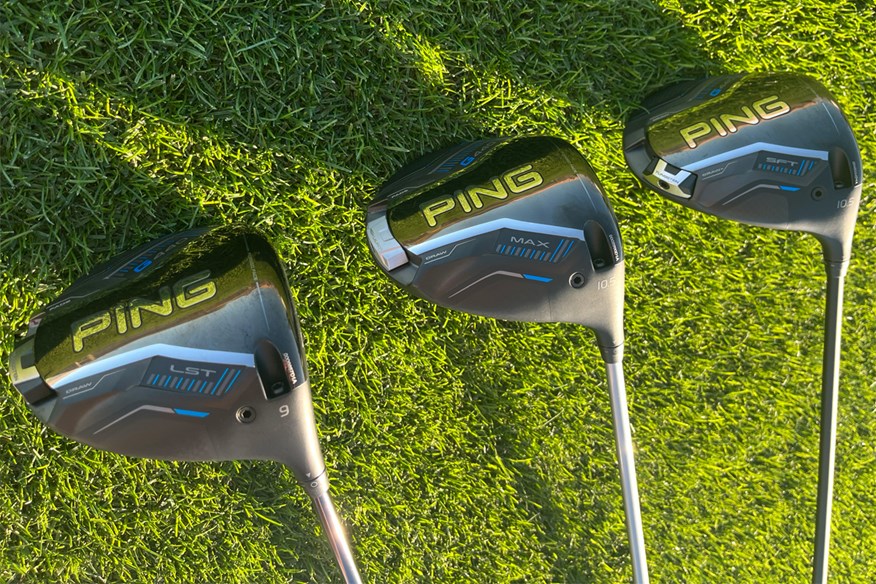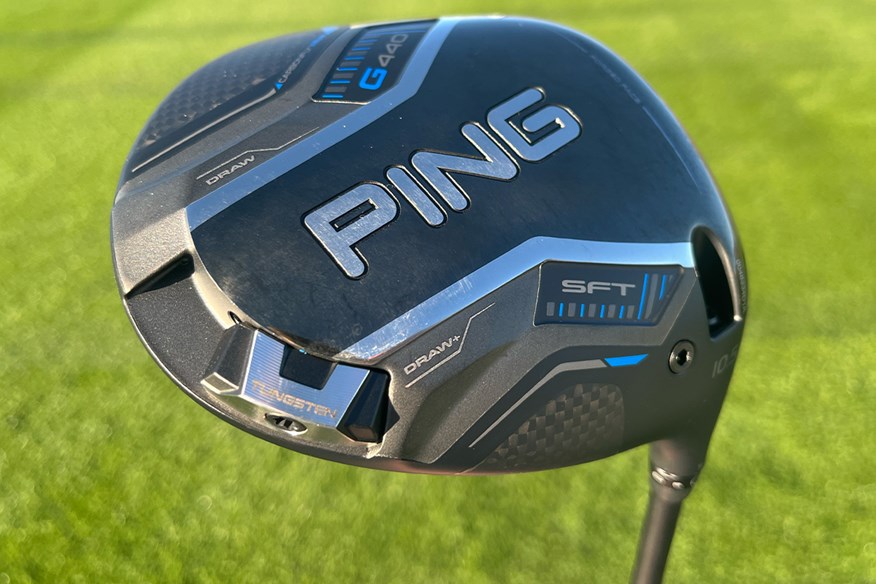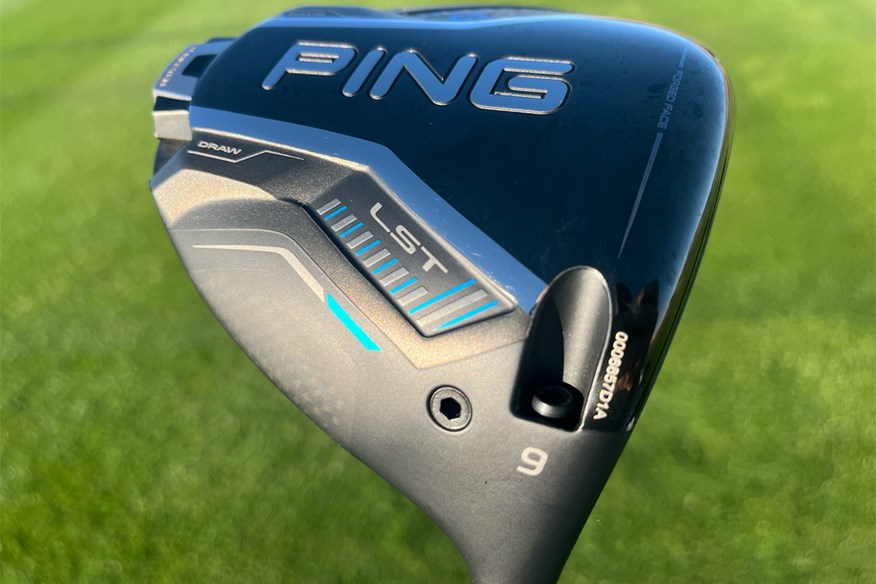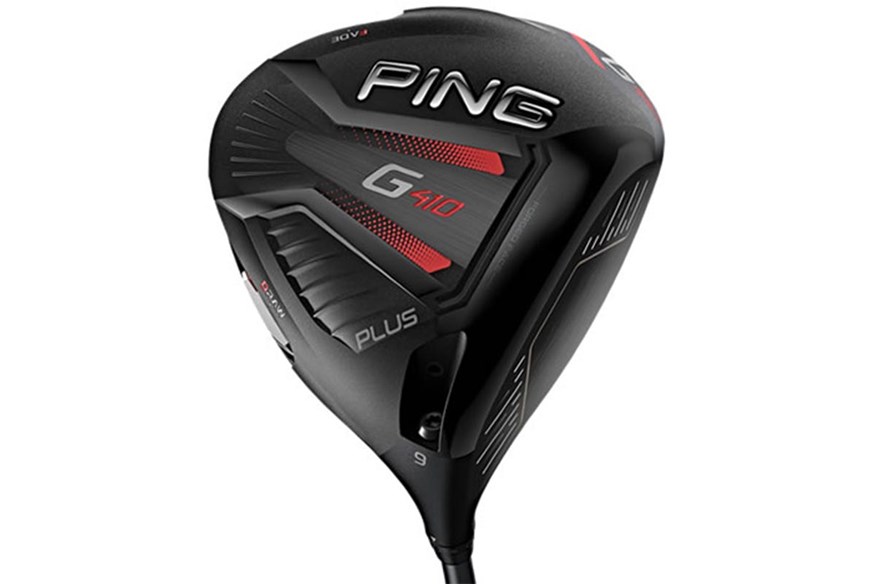Best Ping Drivers 2025: We test every model to find the right one for your game
Last updated:
Click here to find out how we conducted our 2025 golf drivers test
From the ultra-forgiving G430 Max 10K to the all-new G440, we test and compare every Ping driver in 2025 to help you find the perfect fit for your swing and skill level.
Ping have consistently made some of the best golf drivers for many years now. Whether you’re chasing more distance, trying to tighten your dispersion, or simply want a driver you can trust under pressure, Ping’s latest lineup has something to offer every golfer with some of the most forgiving, consistent, and confidence-inspiring drivers in golf.
For 2025, Ping builds on its reputation with the launch of the all-new G440 range, a continuation of its commitment to blending performance with forgiveness. Golfers with fast swings may find they get maximum distance from the low-spin Ping G440 LST model. Golfers who battle an excessive fade or slice will love the draw bias on offer with the Ping G440 SFT. The Ping G440 Max, meanwhile, looks to offer the best of everything, with a focus on forgiveness.
Take a look at all of the G430 drivers available to see which driver best suits your game, including the G430 Max 10k, which is Ping’s latest addition to the range – the most forgiving driver they’ve ever offered. If you want to save yourself some money, it’s worth considering a previous model Ping driver, whether that’s the very recent G425 or the, what now seems ancient, G410.
Best Ping Drivers: our top picks
An impressive number of Tour pros play with Ping drivers. From Viktor Hovland to Linn Grant, Ping have had a lot of success on the professional circuit with their drivers. With Tyrrell Hatton and Adrian Meronk both moving on to the LIV Golf Tour, will Ping enjoy even more success on another global golf Tour?
In this guide, we’ve tested every current Ping driver to help you understand how each model performs and which one is best suited to your swing. Whether you’re a high-handicapper looking for stability or a low single-figure player chasing ball speed and spin control, we’ll help you find the perfect fit.
Best Ping Golf Drivers
The king of forgiving performance
Writing about Ping drivers may sometimes seem like you’re repeating yourself from the last release, but that says everything about Ping’s commitments. They’re a brand that only IMPLEMENT technology implementations when it doesn’t come with a cost to stability, and it’s why they continue to be played by so many types of golfers. The winner of our Max Forgiveness category, the G440 Max, does what golfers have come to expect and yet more than held up against more distance-oriented core models, which some might say PING have lacked in recent years. Stability is a term often thrown about rather recklessly in reviews, but we can confidently say the PING G440 Max offers stability and speed in an attractive package.
What our tester says:
You can’t really notice a difference between the good shots and the bad across the face. It’s really consistent, which is great for trust, but that isn’t coming at a cost of power. Year after year, Ping just knows how to make what works, and somehow find a way to make it better than the last. The looks and feel may not be for everyone, but I quickly forgot about this after seeing the consistency on display.
Read our full Ping G440 Max Driver review.
Ball Speed 163.1 mph | Carry 281.8 yards | Spin (Total) 2,702 rpm | Launch Angle 12.9º | Height 39.9 yards | Descent Angle 43.7º | L-R Dispersion 31.9 yards
Pros
- The Best 'Max Forgiveness Driver Award winner of 2025
- Stable across the whole of the face
- Cleaner graphics update from G430
Cons
- It's not going to be as long as some other models
| RRP | $650 / £575 |
| Lofts | 9º / 10.5º / 12.5º (RH/LH) |
| Head Size | 460cc |
| Lie | 58.5º |
| Stock Shaft Length | 46" |
| Stock Shaft Options | Ping Alta CB Blue 55g / Ping Alta Quick 35g and 45g / Ping Tour 2.0 Chrome 65g / Ping Tour 2.0 Black 65g |
| Stock Grip | Golf Pride Tour Velvet 360 |
- CarbonFly Wrap Crown
- Free-Hosel Technology
- Lighter and Longer Design
- Hotter and Thinner Face
- Wide Adjustability
Best forgiving drivers: Head-to-head data
| Manufacturer | Model | Loft (°) | Clubhead Speed (mph) | Ball Speed (mph) (+/- SD) | Carry Distance (yds) (+/- SD) | Spin Total (rpm) (+/- SD) | Launch Angle (°) | Height (yds) | Descent Angle (°) | L-R Dispersion (yds) |
| Callaway | Elyte X | 10.5 | 116.0 | 163.9 (1.9) | 282.2 (7.9) | 2,585 (421) | 11.9 | 35.4 | 40.5 | 26.7 |
| Ping | G440 Max | 10.5 | 115.1 | 163.1 (1.3) | 281.8 (5.7) | 2,702 (344) | 12.9 | 39.9 | 43.7 | 31.9 |
| Mizuno | ST-Max | 10.5 | 115.1 | 162.4 (1.6) | 281.7 (8.0) | 2,519 (435) | 12.8 | 37.3 | 42.1 | 32.3 |
| Cleveland | HiBore XL | 10.5 | 113.6 | 160.3 (1.4) | 277.9 (3.9) | 2,561 (225) | 12.5 | 36.7 | 41.9 | 24.7 |
| Cobra | DarkSpeed-Adapt Max K | 10.5 | 114.6 | 160.6 (0.4) | 276.1 (6.8) | 2,646 (319) | 12.2 | 36.0 | 41.8 | 33.5 |
| Cobra | DarkSpeed-Adapt Max D | 10.5 | 116.7 | 163.3 (0.5) | 276.1 (6.8) | 2,963 (263) | 13.0 | 42.1 | 45.3 | 29.2 |
| TaylorMade | Qi35 Max | 10.5 | 115.8 | 162.3 (1.6) | 275.4 (4.6) | 2,825 (418) | 11.4 | 35.7 | 41.3 | 16.7 |
| Ping | G440 SFT | 10.5 | 115.9 | 161.8 (1.8) | 275.3 (5.4) | 2,859 (412) | 13.7 | 41.9 | 46.8 | 42.5 |
| Wilson Staff | DynaPower Max | 10.5 | 113.9 | 161.5 (1.1) | 273.2 (5.9) | 2,887 (281) | 12.6 | 38.8 | 44.0 | 18.7 |
Ping Anti-Slice model is a game changer for the high handicap golfers
During testing, pro golfer Neil Wain was impressed by the G440 SFT’s overall performance, particularly its ball speed and carry. While PING drivers have historically lacked in distance, the G440 range for 2025 seems to offer a notable boost, making it a strong option for amateur golfers looking for more power off the tee. The technology behind this driver means anyone struggling with a slice will significantly benefit from having this in the bag. Trust me, it works!
TG Test Pro Data:
Ball Speed: 161.8 mph | Backspin: 2859 rpm | Carry: 275.3 yds | L-R Dispersion: 42.5 yds
Read our full PING G440 SFT Driver review.
Pros
- You'll struggle to find a more forgiving driver.
- Suited to a wide range of golfers.
- Consistency in launch and spin characteristics across the entire face.
Cons
- Some will complain about the louder sound, I say don't let it put you off.
| Lofts | 9º, 10.5º, 12.5º |
| Stock shafts | Ping Alta CB (counter-balanced) Blue 55 (SR, R, S); Ping Alta Quick 35/45 (HL build only) |
| Stock grip | Golf Pride 360 Tour Velvet |
A strong blend of low spin performance and on-course playability.
On our spreadsheet, the G440 LST was the 5th fastest in ball speed and carry, which is an improvement on 2024. The L-R dispersion was exceptional, coming in 2nd place to the Wilson Dynapower LS. The spin wasn't the lowest, but with some tweaking to the adjustable weights and hosel, this could be amended. This is a driver that can be used by any golfer in 2025, and with the G440 family itself offering an array of positive elements, we envisage this to be one of the most popular drivers by the end of the year.
TG Test Pro Data :
Ball Speed 164.7 mph | Carry 289.8 yards | Spin (Total) 2,502 rpm | Launch Angle 13.7º | Height 41.6 yards | Descent Angle 43.8º | L-R Dispersion 17.7 yards
Read our full PING G440 LST Driver review.
Pros
- With an MOI of over 9K the G440 LST is just about the most forgiving driver money can buy.
- A solid balance of distance, forgiveness, and low spin performance.
- Exceptional sound and feel.
Cons
- The busy crown may be distracting for some.
| Lofts | 9º, 10.5º |
| Stock shafts | Ping Alta CB (counter-balanced) Blue 55 (SR, R, S); Ping Alta Quick 35/45 (HL build only) |
| Stock grip | Golf Pride Tour Velvet 360. |
Best low-spin drivers: Head-to-head data
| Manufacturer | Model | Loft (°) | Clubhead Speed (mph) | Ball Speed (mph) (+/- SD) | Carry Distance (yds) (+/- SD) | Spin Total (rpm) (+/- SD) | Launch Angle (°) | Height (yds) | Descent Angle (°) | L-R Dispersion (yds) |
| TaylorMade | Qi35 LS (Forward) | 10.5 | 119.1 | 167.0 (1.3) | 298.0 (8.1) | 2,256 (397) | 13.0 | 38.2 | 40.3 | 23.3 |
| Titleist | GT3 | 10.0 | 117.3 | 165.7 (1.0) | 292.8 (3.1) | 2,378 (186) | 13.0 | 38.9 | 41.6 | 25.2 |
| Titleist | GT4 (Forward) | 10.0 | 116.6 | 165.1 (1.3) | 292.4 (6.0) | 2,274 (363) | 12.9 | 37.1 | 39.9 | 33.3 |
| Callaway | Elyte Triple Diamond (Forward) | 10.5 | 116.5 | 165 (1.5) | 290.8 (6.7) | 2,202 (323) | 11.6 | 32.3 | 36.9 | 33.7 |
| Ping | G440 LST | 10.5 | 115.6 | 164.7 (2.1) | 289.8 (5.4) | 2,502 (311) | 13.7 | 41.6 | 43.8 | 17.7 |
| Srixon | ZXi LS (Forward) | 10.5 | 117.6 | 164.4 (1.0) | 289.4 (4.4) | 2,365 (191) | 12.7 | 37.2 | 41.7 | 46.8 |
| Cobra | DarkSpeed- Adapt LS (Forward) | 10.5 | 117.9 | 164.4 (2.2) | 287.1 (6.4) | 2,504 (414) | 13.3 | 39.9 | 42.7 | 34.8 |
| Wilson Staff | DynaPower LS (Forward) | 10.5 | 114.6 | 162.2 (1.9) | 286.4 (4.7) | 2,228 (194) | 12.8 | 35.1 | 39.6 | 13.6 |
| PXG | Black Ops Tour (Rear) | 10.5 | 114.8 | 162.9 (2.5) | 286.4 (11.1) | 2,126 (594) | 12.6 | 33.1 | 38.4 | 45.6 |
| PXG | Black Ops Tour (Forward) | 10.5 | 112.5 | 164.5 (1.6) | 286.2 (5.2) | 2,204 (293) | 11.2 | 30.4 | 36.8 | 25.4 |
| Callaway | Elyte Triple Diamond (Rear) | 10.5 | 116.1 | 164.2 (1.5) | 286.2 (6.3) | 2,516 (310) | 12.8 | 38.3 | 41.7 | 25.7 |
| TaylorMade | Qi35 LS (Rear) | 10.5 | 117.4 | 165.6 (1.5) | 284.6 (6.8) | 2,715 (466) | 11.9 | 37.6 | 42.0 | 39.0 |
| Cobra | DarkSpeed- Adapt LS (Rear) | 10.5 | 117.4 | 165.2 (2.2) | 284.2 (3.9) | 2,778 (142) | 12.3 | 39.8 | 43.3 | 32.1 |
| Srixon | ZXi LS (Rear) | 10.5 | 116.4 | 161.8 (2.5) | 282.6 (5.2) | 2,337 (172) | 11.8 | 33.3 | 39.4 | 33.0 |
| Wilson Staff | DynaPower LS (Rear) | 10.5 | 114.6 | 161.6 (1.3) | 282.1 (2.0) | 2,408 (229) | 12.9 | 36.8 | 41.4 | 15.9 |
| Titleist | GT4 (Rear) | 10.0 | 117.2 | 163.1 (2.0) | 277.7 (13.2) | 2,876 (558) | 12.8 | 39.7 | 43.5 | 50.9 |
Ping's driver that can work for a wide range of golfers
Best all-round Ping driver
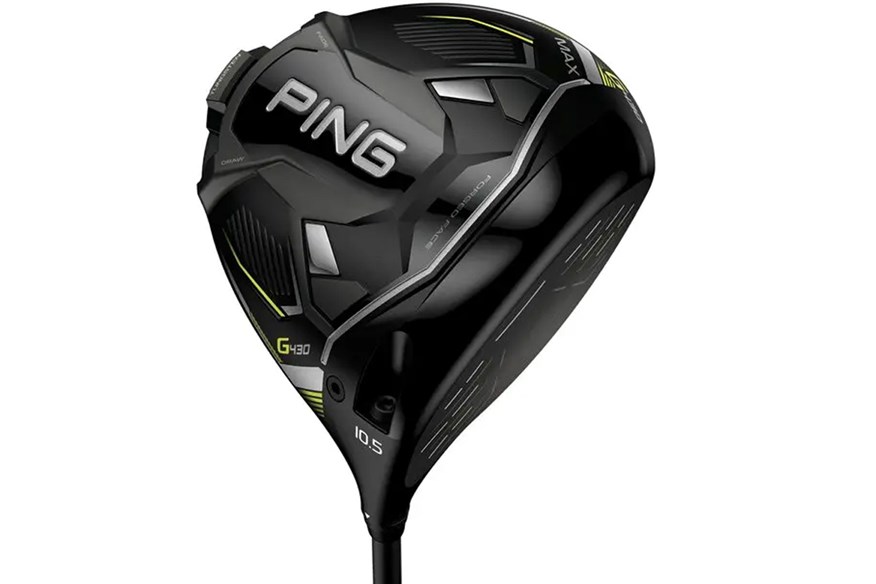

Our data has it down as being a single yard back from the very longest. It’s an excellent result (which could be reversed on another day), especially when you factor in that Ping drivers are so forgiving that they are usually a fraction back from being the very fastest or longest available. The MAX didn’t quite give our very tightest dispersion numbers (experience says results are influenced more by a tester than a club), but it did give our pro his smallest drop-off in ball speed, so expect good on-course consistency. All other dispersion metrics were well below our test averages.
All in all, the G430 MAX is a brilliant driver option for a wide audience of golfers and easily one of the best Ping drivers for 2023. A new, lower-launch Tour 2.0 Black shaft is good for higher-speed players, while a lighter High Launch set-up will optimize ball flight for sub-85 mph swing speed players.
Read our full Ping G430 MAX driver review.
Pros
- Suits a wide range of golfers
- Amazing workability and adjustability
- Extremely forgiving
Cons
- Doesn't have a carbon fiber crown
| Lofts | 9° / 10.5° / 12° |
| Stock shafts | Alta CB Black, Ping Tour 2.0 Chrome, Ping Tour 2.0 Black, Alta Quick |
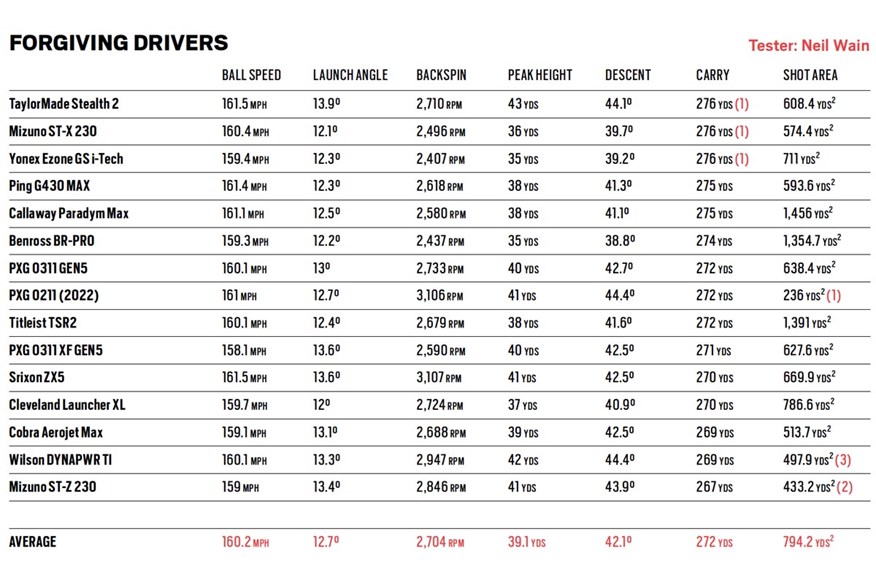
A brilliant low-spinning driver for golfers with quick swing speeds
Best low-spin Ping driver
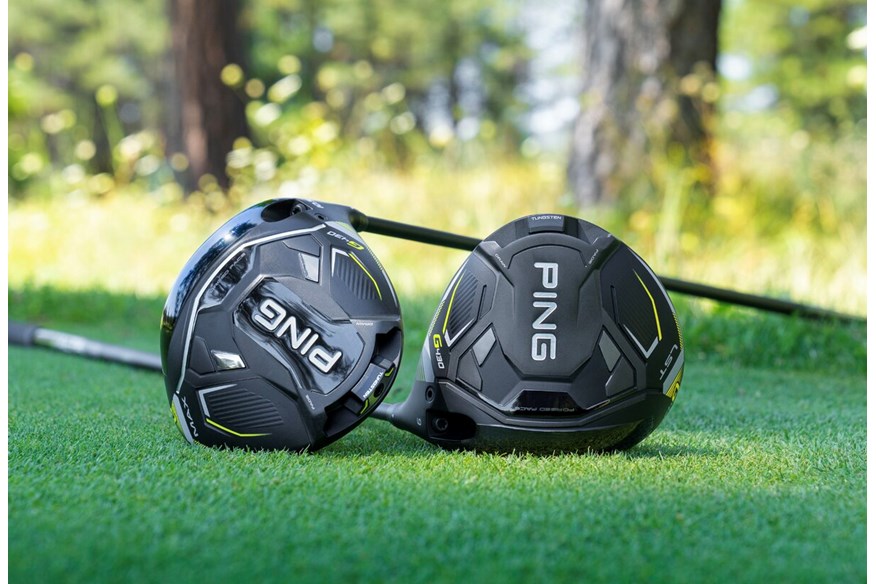

The Ping LST drivers traditionally have looked more intimidating at address, this new model looks more friendly and playable sat behind a ball. Ping say the 9,083 g/cm2 MOI is 5.5% higher than its G425 LST predecessor and is now at the level of most rivals’ more forgiving drivers.
Ping drivers usually favor forgiveness over all-out ball speed and distance, but our data shows the LST is a bit of a brute in 2023. The model was within 0.3mph of the fastest average ball speed of our entire test. And while posting data significantly better than our test averages for protecting ball speed and tightening dispersion, it was also our longest low-spin driver of 2023, with a carry distance of 282 yards – an impressive step forward from the previous model.
Thanks to the carbon crown upping price increase, the G430 LST is a sizeable investment over previous titanium Ping drivers. But if your game will benefit from cutting spin and you don’t want to give up forgiveness unnecessarily, the LST will be good now and for years to come.
Read our full Ping G430 LST driver review.
Pros
- Flies exceptionally well for quicker swing speeds
- Delivers great distance
- Feels really solid
- Proven winner on multiple Tours
Cons
- Doesn't suit as many golfers as other models
| Lofts | 9° / 10.5° |
| Stock shafts | Alta CB Black, Ping Tour 2.0 Chrome, Ping Tour 2.0 Black |
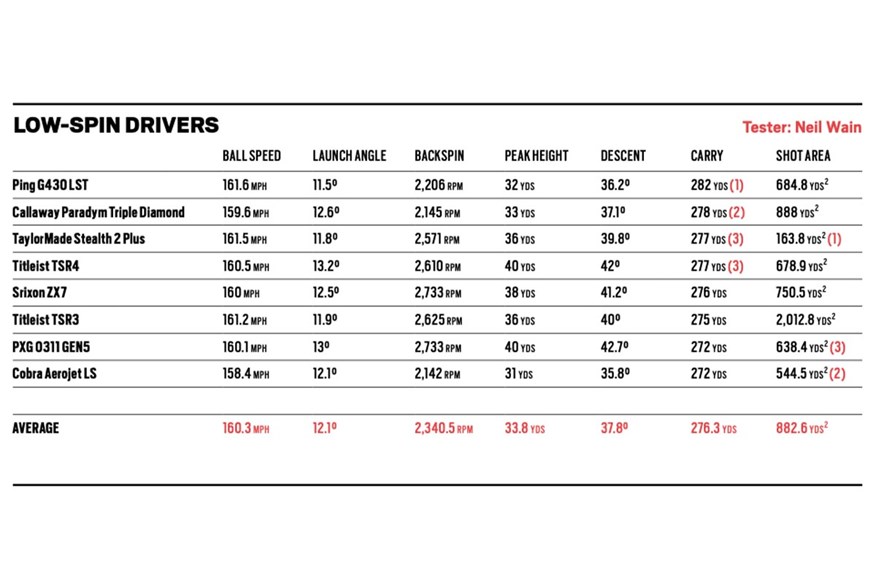
Ping's most draw-bias driver
Best draw-bias driver
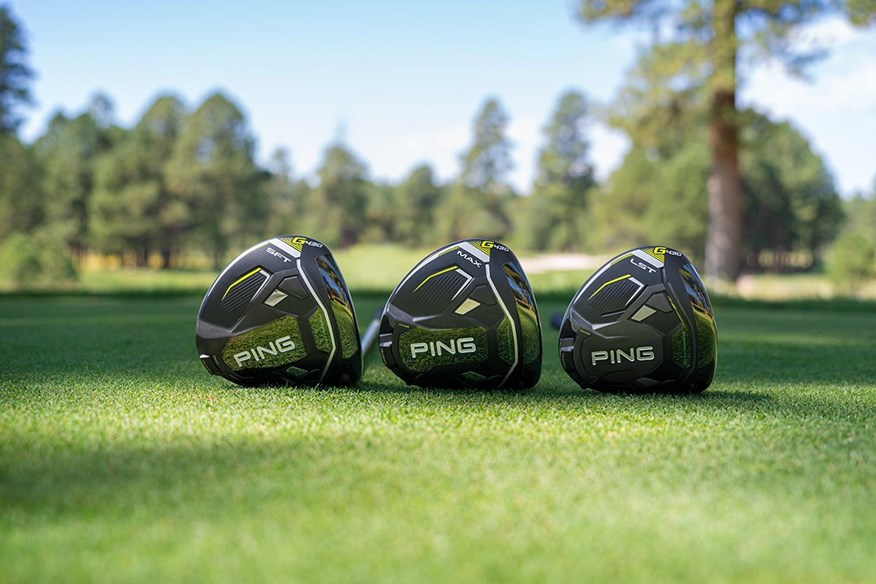

As has been the case with several generations of SFT, the model is a really good-looking driver. There’s no massively closed face angle here, and the head isn’t any less attractively shaped or flattened like a pancake to up confidence and forgiveness over the more neutral MAX model.
In the Draw setting, our data has the model down as producing a top-three performance for ball speed, left-right dispersion, shot area, and carry distance drop-off, which, of course, even though it’s a few yards back from our very longest, means it will be super playable and easy to live with on the golf course.
All in all, consider the G430 SFT a brilliant option for slicers.
Read our full Ping G430 SFT driver review.
Pros
- Brilliant anti-slice driver option
- Very confidence instilling behind the ball
- Looks really good
Cons
- Lack of lofts
| Loft | 10.5° |
| Stock shaft | Alta CB Black, Ping Tour 2.0 Chrome, Ping Tour 2.0 Black, Alta Quick |
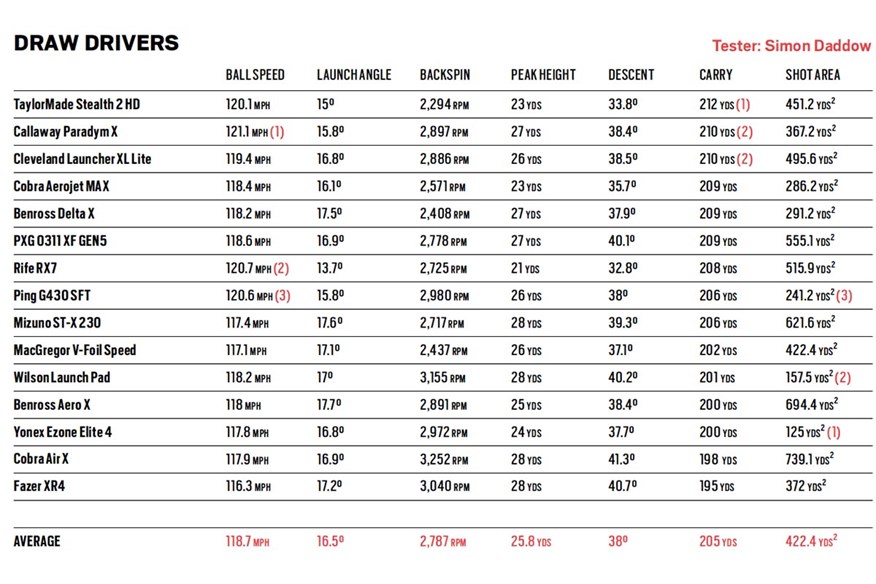
Ping's highest MOI driver delivers extreme forgiveness
Most forgiving Ping driver
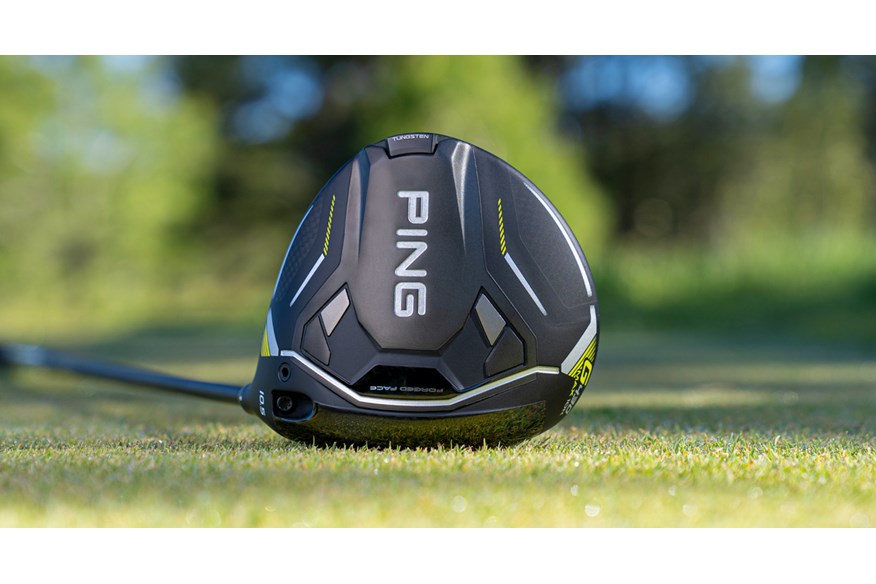

This model is undoubtedly designed to help you hit more fairways and I found this driver gave me my second smallest shot area, proving that it is a fairway finder.
Sometimes, forgiving drivers can make you lose distance but being only 4 yards behind the longest driver in our recent test, there should be no concerns about this driver struggling to produce good distance off the tee.
There is something incredibly confidence-boosting knowing you're holding a club with 10,000 MOI, therefore, the G430 Max 10k should definitely be a Ping driver you consider.
Read our full Ping G430 Max 10k Driver review.
Pros
- Super forgiving
- Delivers competitive distance
- Feels really good
- Sounds sweet
Cons
- Some might not like the louder sound
Ping's female-specific driver is a great option for golfers with slower swing speeds
Best ladies' Ping driver
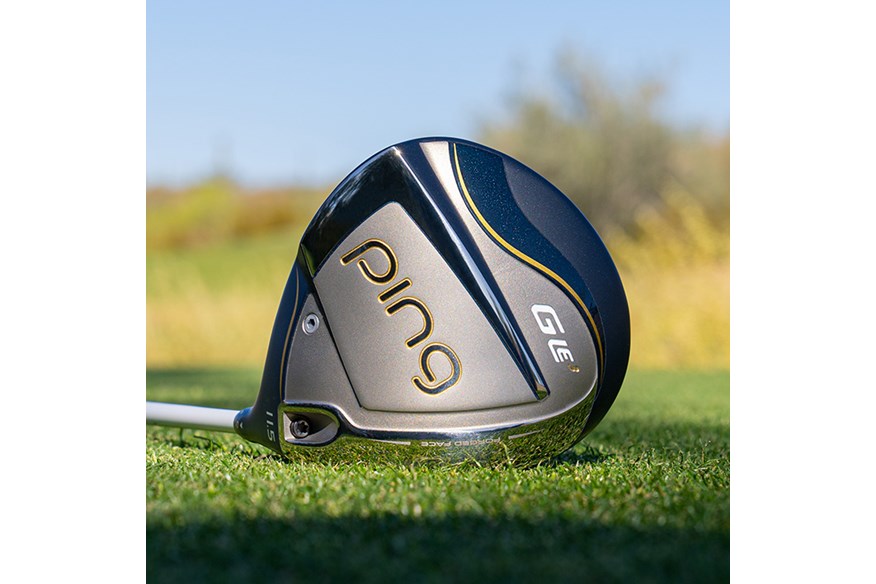

The titanium head is rounder and more aerodynamic than its predecessor, helping you to achieve a faster club head speed. A thin, forged T9S+ material has been used to increase face flexing for more ball velocity and improved launch conditions. Internal heel-based weighting helps to straighten the ball flight, and soft turbulators help frame the ball at address.
Ping have always been leaders in ladies' custom-fitting, and the new G Le3 comes with an even greater choice of options to empower women of all skill levels to play, improve, and get great enjoyment from their golf.
You can truly personalize your ball flight thanks to a new lightweight, aerodynamic hosel sleeve that gives eight positions with loft adjustments (+/- 1.5°), guaranteeing that this is a driver that will really work for your individual needs.
See more of the best ladies' golf drivers.
Pros
- Works very well for golfers with slow swing speeds
- Better colors compared to previous model
- Extremely lightweight
- Easy to launch
Cons
- Players with quicker swing speeds need to be playing G430
| Loft | 11.5° |
| Stock shaft | Ping ULT250 |
Ping's previous generation driver presents fantastic value
Best value Ping driver
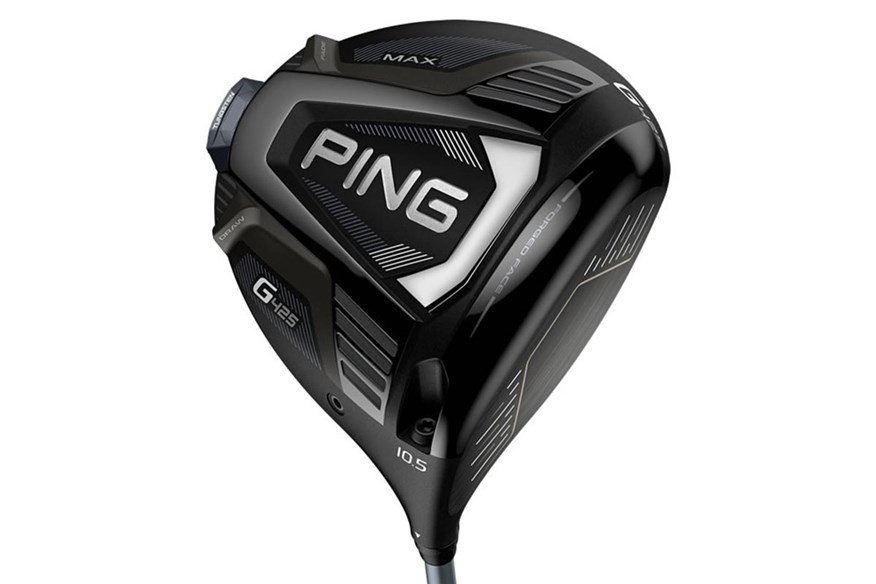

Ping G410 was replaced by the Ping G425 Max, which has a 460cc head that is rounder in shape than the LST model, and thanks to a 26g CG shifter (which is 10g more than the G410 Plus) you get 7% more MOI forgiveness than you did from the Ping G410 Plus.
The Ping G425 Max also enables golfers to add 20% more draw bias or 16% more fade bias than the previous model, to help really dial in your preferred shot shape.
Thanks to the updates, if like many golfers your favorite recent G driver is still the G400 Max, Ping say the G425 Max boasts more forgiveness than this MOI monster. Incredibly, this great-looking driver nudges the 10,000 (g-in2) MOI barrier, which was the level Nike needed a square head to tip (the SQ-Sasquatch) back in 2008. In simple terms, it makes it incredibly stable, which helps you keep the head square at impact.
Read our full Ping G425 Max driver review.
Pros
- Brilliant value if you don't want a G430
- Looks fantastic
- Extremely forgiving
- Still used by some Tour pros
Cons
- Can generate a lot of spin
| Lofts | 9° / 10.5° / 12° |
| Stock shafts | Ping Tour, Ping Alta CB |

A seriously good deal for a very competitive driver
Best bargain-buy Ping driver
Until this point, Ping had stayed away from the adjustable market because they believed weight tracks (particularly those that go through the center of the head) meant a compromise on MOI performance.
But with the launch of the G410 Plus driver, Ping felt the time was right to introduce a moving weight track to their driver, without feeling like they would have to sacrifice forgiveness or MOI performance.
The G410 driver has a 455cc head size, which Ping say has a 15% higher MOI than competitor drivers with movable CG locations.
A 16g tungsten weight (which is 8% of the head's weight) can be positioned to give up to 10 yards of shot bias to help dial in a golfer's preferred shot shape, which Ping say improves fitting capability.
Read our full Ping G410 Plus driver review.
Pros
- Extremely forgiving
- Makes a sweet sound
- Sits well behind the ball
Cons
- Being slightly older it isn't easy to pick up new
Best Golf Drivers Buying Guide
Driver design innovations in 2025
Last year saw some of the biggest driver innovations for a decade as brands focused strongly on forgiveness. Increased MOI (Moment of Inertia) delivered more stable clubheads that boosted distance and accuracy on off-centre strikes.
If 2024 was the year of MOI drivers, what is the theme in 2025? Based on the key technologies being lauded, 2025 might well be the year of lower spin.
Callaway’s Elyte drivers and the Titleist GT series are both using ‘Thermoform Carbon’ crowns to reposition weight and lower the centre of gravity (CG) to decrease spin.
The TaylorMade Qi35 drivers use a blend of premium materials to retain forgiveness while bringing down CG to the lowest they’ve ever had it. And Ping, with their G440 drivers, have innovated with a ‘Free-Hosel Design’ that gives them discretionary mass to place on the sole for a deeper, rearward CG position.
Cobra, Srixon, Wilson, and PXG have also optimized the launch and spin conditions of their new driver designs as they seek to rival the big boys.
The importance of the centre of gravity (CG)
One of, if not the most important, aspects of modern driver design is CG (Centre of Gravity) placement. CG will help dictate the characteristics of the driver by influencing how the head wants to present itself during impact and how it reacts to different strikes.
While CG overall is a way to describe the point that the driver’s weight is balanced in all directions, and is measured over three planes: the X, Y, and Z-axis.
Shot Shape
X-Axis is about heel-to-toe location and can influence how much draw or fade bias a driver can have. If I’ve put the Centre of Gravity closer to the heel, the club will be easier to square up and can help with fighting a cut shot or open-face strikes. The driver will be harder to close if the weight is in the toe.
Ping’s G440 SFT and Cobra’s DarkSpeed-Adapt Max D are both heel-bias CG drivers to help golfers who struggle with slices or cut shots. The Srixon ZXi driver can be flipped between heel and toe CG positions.
Spin
The Y-axis is high-to-low (or crown-to-sole) and changes the driver spin rates. If I have CG higher in the head, impacts below that placement will cause the driver to ‘deflect’ downwards and cause the ball to spin more through ‘Gear Effect.’ Conversely, lower CG will mean more of the face will resist the backspin being created.
The TaylorMade Qi35 driver’s story is all about how the company have brought CG lower in the head than last year’s Qi10.
Forgiveness
Finally, the Z-axis is the front-to-back placement, affecting the forgiveness and power potential of the driver. The easiest way to think of this is by imagining a triangle down the middle of the club with the point towards the rear of the head.
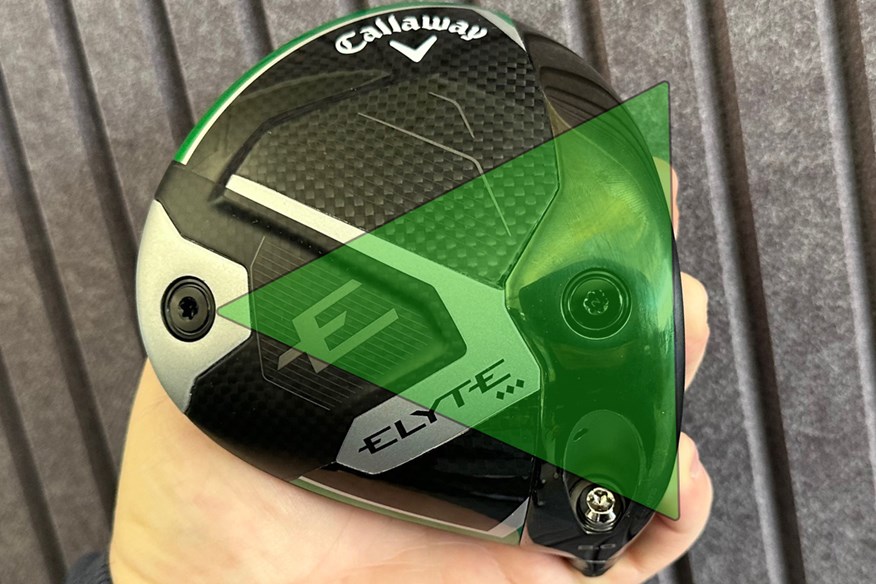
If we move the point further back, the triangle has a wider base at the driver face. If we move the triangle higher up, the point is closer to the face so the triangle has a narrower base.
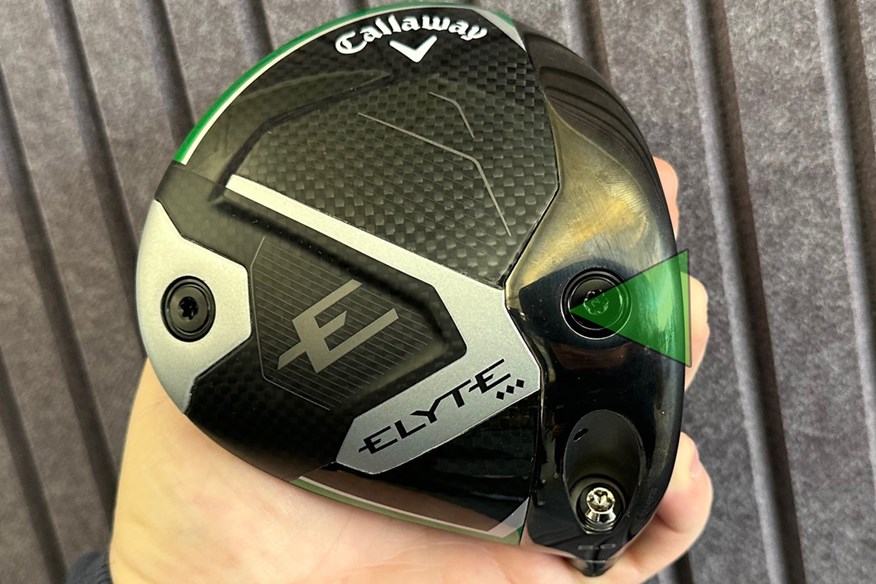
Think of CG like the triangle; the further back it is, the more influence it has on the rest of the face, helping stabilize a wider spread of strikes. The further forward CG has less stability on off-centre impact, but it’s more concentrated in the middle.
This is what golf equipment manufacturers mean when they talk about MOI, or Moment of Inertia. It’s the driver’s resistance to twisting on bad contact, helping retain ball speed, distance, and keeping the ball straighter.
The further back you can get CG, the higher the MOI rating. This is what the new models of 10K drivers, such as Qi35 Max, are offering.
A forward-CG driver, meanwhile, can give you great ball speed and power by producing a ‘hotter’ spot in the centre, but if you aren’t finding the middle consistently, then you’re going to suffer greater performance drop-off. Titleist’s GT4 and Callaway’s Elyte Triple Diamond fall into this category.
Some Drivers, like the Qi35 or the Srixon ZXi LS, have weights that can be swapped between forward and back positions to alter Z-axis CG.
Loft
Finding the right loft is one of the most important elements to consider with a new driver. Possibly the biggest influence on key metrics, including spin, launch, height, and descent angle, it will also impact the speed and distance of your drives. More loft works better for slow swing speeds, or golfers who hit ‘down’ on the ball. Less loft works better for faster swing speeds or golfers that hit ‘up’ on the ball.
Adjustability
As we mentioned with the Centre of Gravity, some drivers can be altered to suit different players’ needs. This can come in the format of the movable weights you see with Ping’s G440 Max or Callaway’s Elyte, or with a fixed position that can have different weights installed, like the Titleist GT2 offers.
Golfers are also now being given loft and lie options with every major brand on the market. Cobra have engineered their all-new FutureFit33 loft sleeve, giving you more setup positions than any brand ever has before.
Working with the right professional to find the correct choice in the plethora of settings now available is paramount.
Custom fitting
While it’s 2025 and we’re in the most advanced position we’ve ever been in with fitting technology, a surprising number of golfers are still just buying off-the-shelf models.
Visiting a custom fitter doesn’t have to come with an extortionate price point or the upcharges you’ve been led to believe. A lot of custom-fitted clubs can be purchased at the same price as the stock options, but giving yourself the best chance at striking the ball out of the middle and finding your target is essential to playing better golf.
Budget
Drivers, like everything, are getting more expensive, no doubt. I think there are two ways of considering the budget you want to commit to when searching for a new driver.
If you’re new to the game of golf, or progressing rapidly in your golf game, it may not be the best idea to commit to a $600 driver immediately as there is a strong chance your needs will also change within 12-18 months (although if you can don’t mind the cost, we wouldn’t want you to dismiss a new model driver).
The alternative is to consider how long you’ll likely have the driver for. Golfers keep their woods for five years on average, so I’d think about how the price will break down over the length of time you’ll have the club in your bag.
A $600 driver over five years is $120 a year – that’s a far more reasonable amount for the use you’ll get out of it each year.
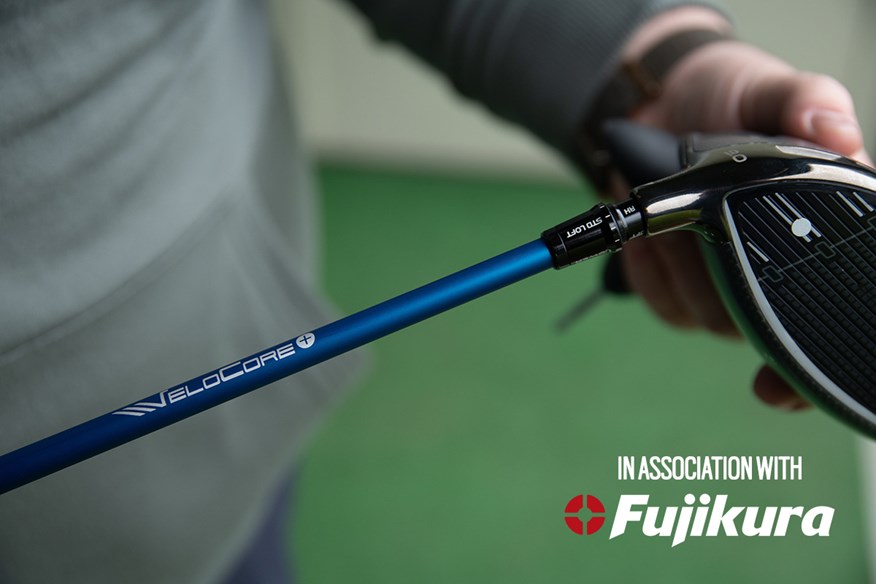
Best Ping drivers: buying advice & FAQs
READ NEXT
– The Best TaylorMade Drivers
– Best Ping Irons
– Drivers for beginners and high-handicappers

